GC-MS analysis of phytoconstituents from Amomum nilgiricum and molecular docking interactions of bioactive serverogenin acetate with target proteins
- PMID: 33009462
- PMCID: PMC7532471
- DOI: 10.1038/s41598-020-73442-0
GC-MS analysis of phytoconstituents from Amomum nilgiricum and molecular docking interactions of bioactive serverogenin acetate with target proteins
Abstract
Amomum nilgiricum is one of the plant species reported from Western Ghats of India, belonging to the family Zingiberaceae, with ethno-botanical values, and is well-known for their ethno medicinal applications. In the present investigation, ethyl acetate and methanol extracts of A. nilgiricum were analyzed by Fourier transform infrared spectrometer (FTIR) and gas chromatography-mass spectrometry (GC-MS) to identify the important functional groups and phytochemical constituents. The FTIR spectra revealed the occurrence of functional characteristic peaks of aromatic amines, carboxylic acids, ketones, phenols and alkyl halides group from leaf and rhizome extracts. The GC-MS analysis of ethyl acetate and methanol extracts from leaves, and methanol extract from rhizomes of A. nilgiricum detected the presence of 25 phytochemical compounds. Further, the leaf and rhizome extracts of A. nilgiricum showed remarkable antibacterial and antifungal activities at 100 mg/mL. The results of DPPH and ferric reducing antioxidant power assay recorded maximum antioxidant activity in A. nilgiricum methanolic leaf extract. While, ethyl acetate leaf extract exhibited maximum α-amylase inhibition activity, followed by methanolic leaf extract exhibiting aldose reductase inhibition. Subsequently, these 25 identified compounds were analyzed for their bioactivity through in silico molecular docking studies. Results revealed that among the phytochemical compounds identified, serverogenin acetate might have maximum antibacterial, antifungal, antiviral, antioxidant and antidiabetic properties followed by 2,4-dimethyl-1,3-dioxane and (1,3-13C2)propanedioic acid. To our best knowledge, this is the first description on the phytochemical constituents of the leaves and rhizomes of A. nilgiricum, which show pharmacological significance, as there has been no literature available yet on GC-MS and phytochemical studies of this plant species. The in silico molecular docking of serverogenin acetate was also performed to confirm its broad spectrum activities based on the binding interactions with the antibacterial, antifungal, antiviral, antioxidant and antidiabetic target proteins. The results of the present study will create a way for the invention of herbal medicines for several ailments by using A. nilgiricum plants, which may lead to the development of novel drugs.
Conflict of interest statement
The authors declare no competing interests.
Figures
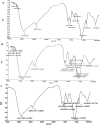
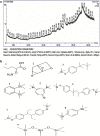
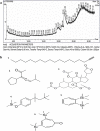



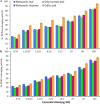
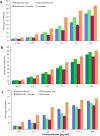







Similar articles
-
GC-MS and molecular docking analyses of phytochemicals from the underutilized plant, Parkia timoriana revealed candidate anti-cancerous and anti-inflammatory agents.Sci Rep. 2022 Mar 1;12(1):3395. doi: 10.1038/s41598-022-07320-2. Sci Rep. 2022. PMID: 35233058 Free PMC article.
-
Bioactive Analysis of Antibacterial Efficacy and Antioxidant Potential of Aloe barbadensis Miller Leaf Extracts and Exploration of Secondary Metabolites Using GC-MS Profiling.Appl Biochem Biotechnol. 2024 Feb;196(2):729-773. doi: 10.1007/s12010-023-04565-z. Epub 2023 May 15. Appl Biochem Biotechnol. 2024. PMID: 37184725
-
Metabolite fingerprinting of phytoconstituents from Fritillaria cirrhosa D. Don and molecular docking analysis of bioactive peonidin with microbial drug target proteins.Sci Rep. 2022 May 4;12(1):7296. doi: 10.1038/s41598-022-10796-7. Sci Rep. 2022. PMID: 35508512 Free PMC article.
-
GC-MS analysis, molecular docking, and pharmacokinetic studies of Multidentia crassa extracts' compounds for analgesic and anti-inflammatory activities in dentistry.Sci Rep. 2024 Jan 22;14(1):1876. doi: 10.1038/s41598-023-47737-x. Sci Rep. 2024. PMID: 38253619 Free PMC article. Review.
-
Health-promoting compounds in Amomum villosum Lour and Amomum tsao-ko: Fruit essential oil exhibiting great potential for human health.Heliyon. 2024 Mar 3;10(5):e27492. doi: 10.1016/j.heliyon.2024.e27492. eCollection 2024 Mar 15. Heliyon. 2024. PMID: 38463888 Free PMC article. Review.
Cited by
-
Methanol extraction revealed anticancer compounds Quinic Acid, 2(5H)‑Furanone and Phytol in Andrographis paniculata.Mol Clin Oncol. 2022 Sep 13;17(5):151. doi: 10.3892/mco.2022.2584. eCollection 2022 Nov. Mol Clin Oncol. 2022. PMID: 36172002 Free PMC article.
-
Anti-pathogenicity of Acanthus ilicifolius leaf extracts against A. hydrophila infection in Labeo rohita fingerlings.AMB Express. 2023 Aug 20;13(1):86. doi: 10.1186/s13568-023-01595-y. AMB Express. 2023. PMID: 37598392 Free PMC article.
-
Exploring the potential antimalarial properties, safety profile, and phytochemical composition of Mesua ferrea Linn.PLoS One. 2024 Dec 2;19(12):e0312047. doi: 10.1371/journal.pone.0312047. eCollection 2024. PLoS One. 2024. PMID: 39621736 Free PMC article.
-
GC-MS biocomponents characterization and antibacterial potency of ethanolic crude extracts of Camellia sinensis.SAGE Open Med. 2022 Aug 10;10:20503121221116859. doi: 10.1177/20503121221116859. eCollection 2022. SAGE Open Med. 2022. PMID: 35966211 Free PMC article.
-
Insight into the phytochemical profile and antimicrobial activities of Amomum subulatum and Amomum xanthioides: an in vitro and in silico study.Front Plant Sci. 2023 Apr 20;14:1136961. doi: 10.3389/fpls.2023.1136961. eCollection 2023. Front Plant Sci. 2023. PMID: 37152127 Free PMC article.
References
-
- Philomena G. Concerns regarding the safety and toxicity of medicinal plants—an overview. J. Appl. Pharmaceut. Sci. 2011;1:40–44.
-
- Semwal DK, Chauhan A, Kumar A, Aswal S, Semwal RB, Kumar A. Status of Indian medicinal plants in the International Union for Conservation of Nature and the future of Ayurvedic drugs: Shouldn't think about Ayurvedic fundamentals? J. Integr. Med. 2019;17:238–243. - PubMed
Publication types
MeSH terms
Substances
LinkOut - more resources
Full Text Sources
Miscellaneous

